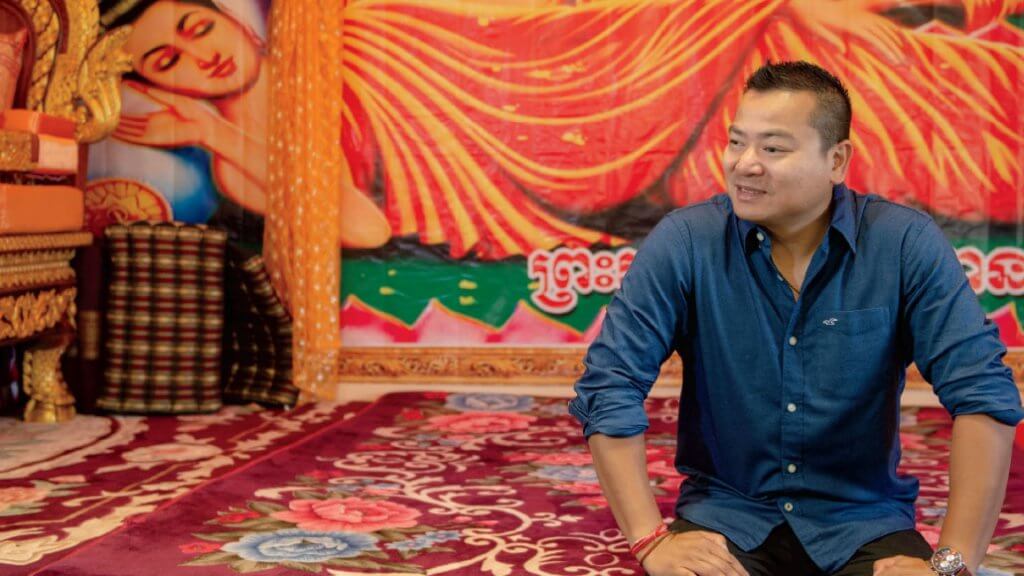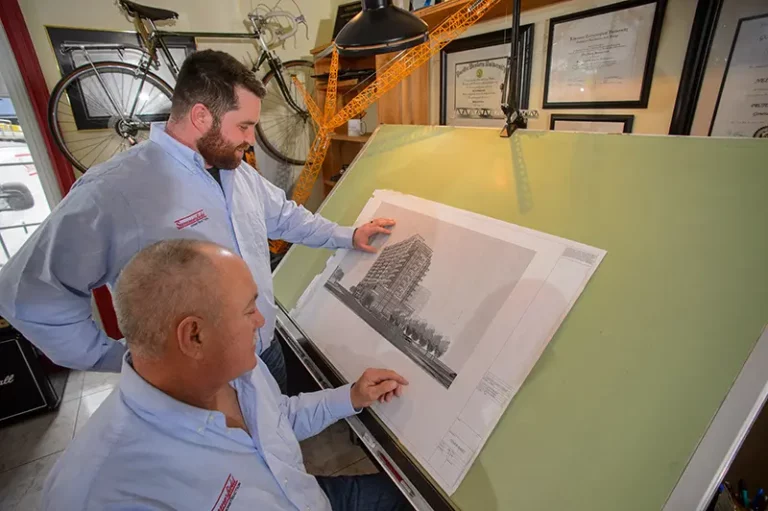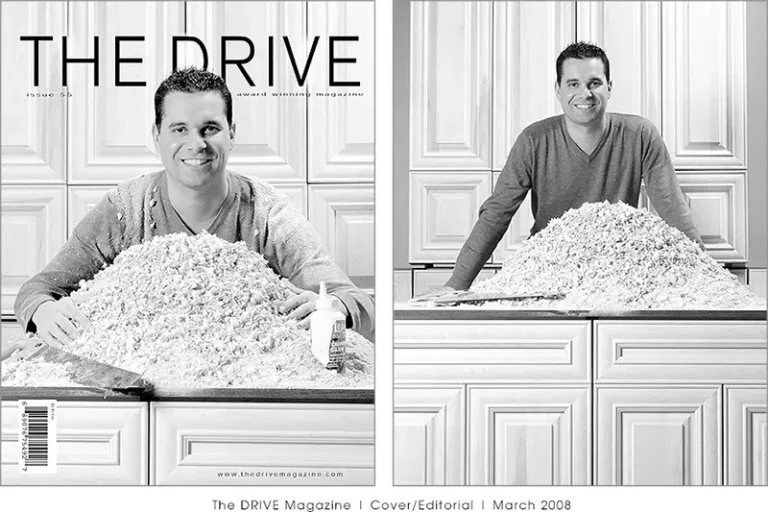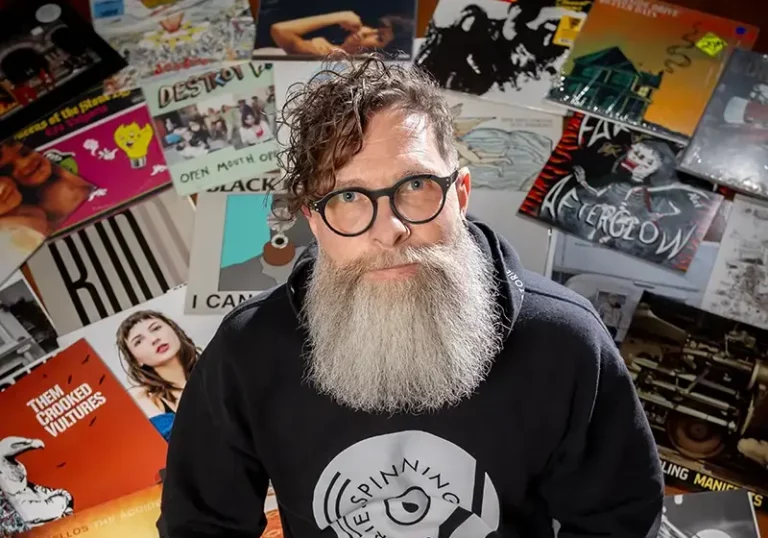When Sarorn Sim—you can call him Ron—was a child, he spent a lot of time sitting and waiting in front of the family television in Windsor. Back then, you were never more than 10 minutes away from the next commercial break
“When I was a kid, I couldn’t understand English,” shares Sim today, a few decades older but no less full of wonder. “Commercials were always the most visual form available. I could understand what they were talking about in 30 seconds. I used to love watching commercials.”
These days, he makes them—among a great many other things. A six-time winner of the Canadian Society of Cinematographers Award for excellence in corporate branding and educational cinematography, Sim shoots widely across genres. He’s worked productively in advertising, television, web films, documentaries, and special assignments in remote and hostile environments, capturing everything from down-the-middle television spots for trendy yoga pants and Russian breakfast sausages to boots-on-the-ground documentaries on survivors of genocide and deadly natural disasters.
His portfolio is, above all else, moving evidence of the human capacity for empathy.
In his own words, Sim’s enthusiasm for storytelling is “fuelled by my desire to bring viewers into different worlds, expanding their perspective, and gaining a better understanding of the people and places that make up our planet.” It’s a good line, and the work supports it. To Sim, only through understanding the broader human experience do we come to understand ourselves. Stories reflect and represent our reality, but they also shape and coax it
Sim’s Rolodex includes multinational corporations, news and non-governmental organizations, and television networks from around the world—the National Geographic Channel, Outdoor Life Network, BBC, APTN, and CTV—but also Ford, LG, McDonald’s, Lululemon, and Kraft. He’s even found a successful line of work filming immersive 360-degree virtual reality installations for trade show booths. There’s a lot of world out there to shoot.
None of this was ever very likely. Sim grew up in a refugee camp along the border of Thailand and Cambodia, during one of the worst periods of mass killing of the 20th century. His family subsisted on rations of rice, cans of tuna, and United Nations–branded water jugs, eyes frequently fixed on the bomber-dotted sky above
One day, Sim’s eyes in particular were transfixed by a similarly shocking development at ground level: a white man, holding the largest camera he had ever seen. Sim watched him for hours
On September 25, 1985, the Sim family emigrated to Canada and settled in Windsor. Soon after, he saw what looked like a familiar image on the family television. He was watching The Killing Fields, a British biographical drama about those very same camps. Of course: the man behind the camera.
Perhaps unsurprisingly, Sim became something of a news junkie. “Every morning I’d wake up at 6 am,” says the former Begley Public School student. “I remember I was in second grade, and I would wake up to watch the local news, then I’d wait for CTV Morning to have the international news flash. And I loved it. They were short stories; I would understand everything! At 10 years old, I would go to school, and the teacher would ask me, ‘What’s in the news today?’”
Sim agrees he must have internalized the rules of non-fiction film grammar during those countless captive hours. “It was my morning ritual,” he notes. “Not cartoons, not anything else.”
Scene: The harsh fluorescence of a second-hand store. Small, tomato-stained fingers trace the contours of a makeshift shelving unit supporting small piles of disowned and abandoned electronics, eventually stopping at a handheld VHS video recorder.
When Sim was 13, he spent his summer mornings and afternoons picking tomatoes on a Leamington farm. Before the school year reappeared over the horizon, he’d managed to save $220. It was enough to take to his neighbourhood Goodwill store and leave with his first camera. “My biggest concern at that time,” he recalls, “was how I could afford tape every week.”
Years later, Sim convinced his parents, with the help of a supportive teacher, to allow him to enroll in Sheridan College’s Media Arts–Film and Television program. It wasn’t easy: back in Cambodia, they’d witnessed artists and educators routinely murdered in their home country in an attempt to quell any subversive influence
“Convincing my parents to let me go to film school was a very big ordeal,” Sim recalls. “Their dream was for me to work at Chrysler on the assembly line. Have kids, build a house. They finally let me go, thinking that I would get it out of my system, come back, and work at Chrysler.”
As a freshman at Sheridan, Sim was assigned to produce a short documentary about a topic of his choice. So, he chose the best one he knew
“I’d always wanted to tell my story,” he relates. “I pitched a concept about the story of a little boy coming to Canada for the first time and learning about himself and his own past. It was called Forgotten Past. It was a way for me to find out about myself.”
To this end, Sim showed up in his parents’ living room with a student film crew, and later ventured out across the city to gather B-roll. The project won “best documentary” at Sheridan’s end-of-year awards. It was the first time a first-year student had ever captured that honour.
But Sim was just getting started. Shortly thereafter, he and a friend-cum-production partner began knocking on the doors of some of the country’s biggest television networks. Sim’s parents were planning a return trip to Cambodia for the first time in a quarter-century, and he wanted to send a camera crew. Sim laughs at the memory. “The networks all looked at us like, ‘You guys are nuts. You’re 18 years old. We’re not going to give you hundreds of thousands of dollars to tell this story and risk not making any of it!”
In the end, the duo scrounged everything they could, stretching their paper-thin film-student budget to as far as it would go and asking tape, battery, and camera manufacturers for handouts. Their grit and industry took them to Asia, and they came back with the one-hour documentary that effectively represented Sim’s entrance into professional filmmaking.”
“That was my stepping stone to telling human stories,” he shares. “It’s not my best work, I don’t think, but it’s the best story I’ve ever told.”
Scene: Across a desk in a CTV production office, an email flashes onto the screen of a low-level employee: war has broken out in Afghanistan, and the network is looking for intrepid reporters willing to travel to cover it.
A few months after September 11, 2001, everything changed.
“Nobody wanted to go, so I said, I’m going to go,” recalls Sim. “Because I’d have a job! I didn’t want to be one of those film school graduates without a job.”
His parents didn’t speak to him for six months.
“It was a huge conflict, but I felt a calling,” Sim now insists. “I felt that the general audience here had no inkling of what had happened. Because, when you look at where I come from, the genocide happened because nobody in the outside world knew what was going on in this little country in southeast Asia. I felt very strongly that if there was something I could shed some light on, then that would be my contribution.
“War is a very weird dichotomy,” he continues. “You go there, and you’re scared shitless. And in that split second where you’re getting shot at, you say you’ll never do it again. And then you come back to Windsor, you have a hard time settling back in, and you’ve just gotta go back. And so I went back, many times.”
Scene: A plane touches down just as night falls over Lahore, Pakistan, a handful of hours from the Afghani border. A travel bag, heavy with lights and cameras wrapped in shirts and towels and so made, for the moment, invisible. Peeking out from a bulletproof vest: a smooth, eastern face with little hope of blending in. A van waiting to leave under the cover of darkness.
Sim’s most harrowing assignment was a project for a religious non-profit called Voice of the Martyrs. He was commissioned to tell the story of a young Christian girl who had escaped Taliban kidnappers on foot
After landing in Pakistan, Sim’s crew backtracked into Afghanistan to interview the girl and her family and to retrace her steps across the border. The crew drove though Abbottabad, almost always after dark to avoid detection by the Taliban, likely coming within walking distance of Osama Bin Laden.
“When you’re around war, it’s very boring,” Sim relates. “It’s not like in the movies, where it’s gunfire every minute, where you think you’re going to get killed. That’s scary! But what’s scarier, what made this project more dangerous for me, is the unknown.”
As Sim explains, there was no active conflict—no war war—on the Pakistani side of the border. In the moment, there’s no gunfire, and only the occasional bomb in the distance. But the threat of kidnapping, torture, or worse is constant. “It’s in the back of your head,” he shivers, “and you think it can happen at any second.”
Scene: Haiti, 2010. Sim peers through his viewfinder, panning carefully but not purposefully across an earthquake-razed neighbourhood. As if out of nowhere, a young Haitian boy appears, alone, sitting in a small red chair. A perfect composition. The boy notices and stares directly, a broad smile spreading out across the width of his face. There are flies hovering all about, swarming his head and entering his mouth, ears, nose. Sim doesn’t take the photo.
Sim spent plenty of time shooting in Haiti in the wake of the country’s crippling earthquake. At times, the tough assignment forced him to grapple for the dividing line between documentation and exploitation
“I don’t know why I didn’t take the picture,” Sim recalls. “That was years ago, and I still think about it to this day. In the back of my head, I was thinking, if I take this photo, in what way would I contribute?”
The story, one that Sim told as part of his successful TEDxWindsor talk earlier this year, unearths a similar memory. “I remember another time walking through the streets of Haiti,” he recollects. “I met this woman who had just given birth to her son two days after the earthquake. And I said to her, ‘Hey, I was born in a refugee camp as well, and I’m doing fine; there’s a future for me. Just because your son was born in the middle of chaos, don’t ever think anything less of him. If he travels the right path and believes in himself, and you support him, he could get somewhere.’”
Visibly emotional, Sim has touched on what must be a fundamental fear of erasure that motivates all good documentarians. In a curious way, this anecdote brings more terror to the surface than anything that happened in Afghanistan. “As I get older,” Sim explains, “because I don’t usually talk to people about these things, situations like that, I forget. That’s my biggest fear in this life: forgetting those moments that I’ve had.”
Scenes: An idiosyncratic black and white sketch of a French-accented jazz scat musician with a penchant for Motown reveals itself to be an ad for Shure Audio. A piece of LG is ostensibly about cellphones, but it really tells a story, backdropped by a recognizable Shins instrumental, about the ways technology connects families. A sentimental spot traces a young woman as she wades into the working world after earning her first job; it happens to be at McDonald’s.
Over the past six or seven years, Sim has transferred himself all-but-completely over to commercial work. “It’s a different kind of storytelling,” Sim offers, not quite supressing a laugh. “I’m selling a brand now as opposed to trying to buy hearts and minds.”
Sim, who takes on between 30 and 50 projects in a normal year, now frequently finds himself criss-crossing the globe to tell human stories on behalf of multinational corporations. “Having that understanding of the human experience and bringing that to a brand is what a lot of companies now seek to do,” he explains. “To humanize a brand is very important, and that’s the specialty I bring. It allows me to use what I’ve learned in the past and bring that to a commercial level.”
Sim’s commercial pieces tend to tell small, empathetic stories about humanity. Often stretching over a minute in length, the spots generally employ a familiar, recognizable aesthetic: clear human faces in front of the camera; swathes of natural light; the soft, steady thrum of pleasant but propulsive background music
“A cinematographer is the person that captures the visuals to help paint the story,” he explains. “If I can tell a story visually, before the words are added, then I’ve done my job very well.”
Scene: Sim’s white BMW meanders around the streets of Windsor, retracing the tracks of what became a welcomingly normal Canadian youth: an elementary school; a vacant alley that doubles perfectly as a bicycle thoroughfare; a convenience store with a history of brisk penny candy sales.
In his professional life, Sim has always been attracted to the ability to transform an environment without really ever touching it, like a magician must presume to do. “I have an infatuation with flashlights,” he confesses. “I paint with light. That’s what I do. I never understood why, but I remember once pointing one at something dark, and I exposed that area; I felt that image that was being exposed then had a purpose.”
Going forward, he hopes to effect transformation in a more material way
When Sim’s family arrived among the first wave of Cambodian immigrants to our area, there was no Cambodian Buddhist temple in Windsor to greet them. Today, Sim is sitting across from me at Khemara Buddhist Temple, a modest, retrofitted Highway 3 home that has served for the past dozen or so years as a place of worship and sanctuary for the 80 to 100 families that comprise the southwestern Ontario Cambodian diaspora.
Outside of work, Sim now spends a fair amount of his time galvanizing the second-generation Cambodian community to reach for greater heights. He hopes to one day consolidate the temple’s holdings, sell the property, and commission the construction of a proper temple—one recognizable from the road as a traditional Cambodian place of worship.
“Having a place like this to come back to makes me more grounded,” says Sim, who was raised in the faith. “I believe it makes me become a better person. When you’re dealing with big sets, big egos, big lights, and the big Hollywood world, you kind of forget you’re human! Coming back to a city like this and having a place of worship, a family, and a community that supports me and that knows me—it’s priceless.
“Our parents brought us here, and established a base for us here to thrive,” he continues. “But how do we use that to make a base for our children? What’s our stamp here? What kind of place are we going to leave behind here in Windsor? When I drive by Dominion Boulevard every day, and I see that Muslim mosque, I am so proud to see that here. I want that same feeling for our community. If I’m able to do that in my lifetime here in Windsor, I would love to.”
While Sim is currently based in Bloomington, Indiana, where his wife attends medical school, he hopes to soon land back in Windsor, to stay
“I’ve always wanted to settle back in Windsor,” says Sim. “It’s my hometown. It means a lot to me, to come back and hopefully raise a family here and have them understand some of what I’ve been through. I’m very fortunate in that I’m at a stage in my career where I can practise my craft anywhere.”
Then, the real work can begin.
Scene: In an unremarkable theatre inside a conventional suburban cinema, a man and wife sink softly into their seats, waiting patiently as a Ford pickup truck powers across the frame. Ten seconds pass, and then twenty, and then maybe five more. The man adjusts himself, straightens his back, and widens his eyes.
“Hey,” he exclaims, almost involuntarily. “I shot that commercial!”
Find Ron’s online work at:
https://www.instagram.com/rondondingdong/
https://www.linkedin.com/in/ron-sarorn-sim-csc-76212ab/
https://www.facebook.com/sarorn.sim
TEDxWindsor talk: https://www.youtube.com/watch?v=qJqRZ9GpyXs



